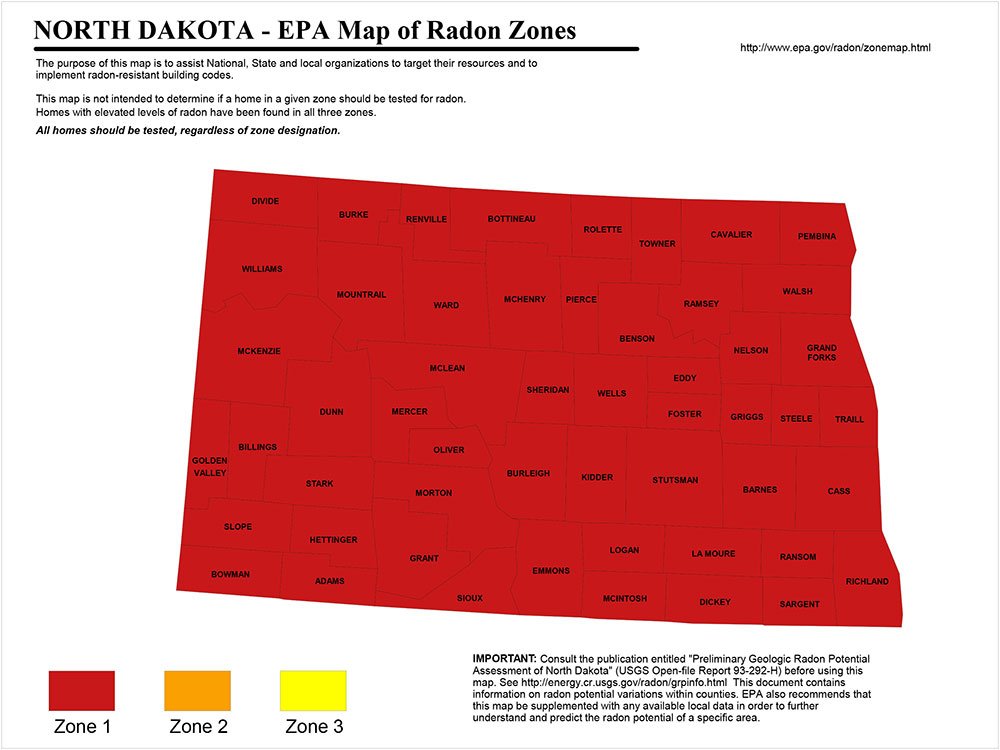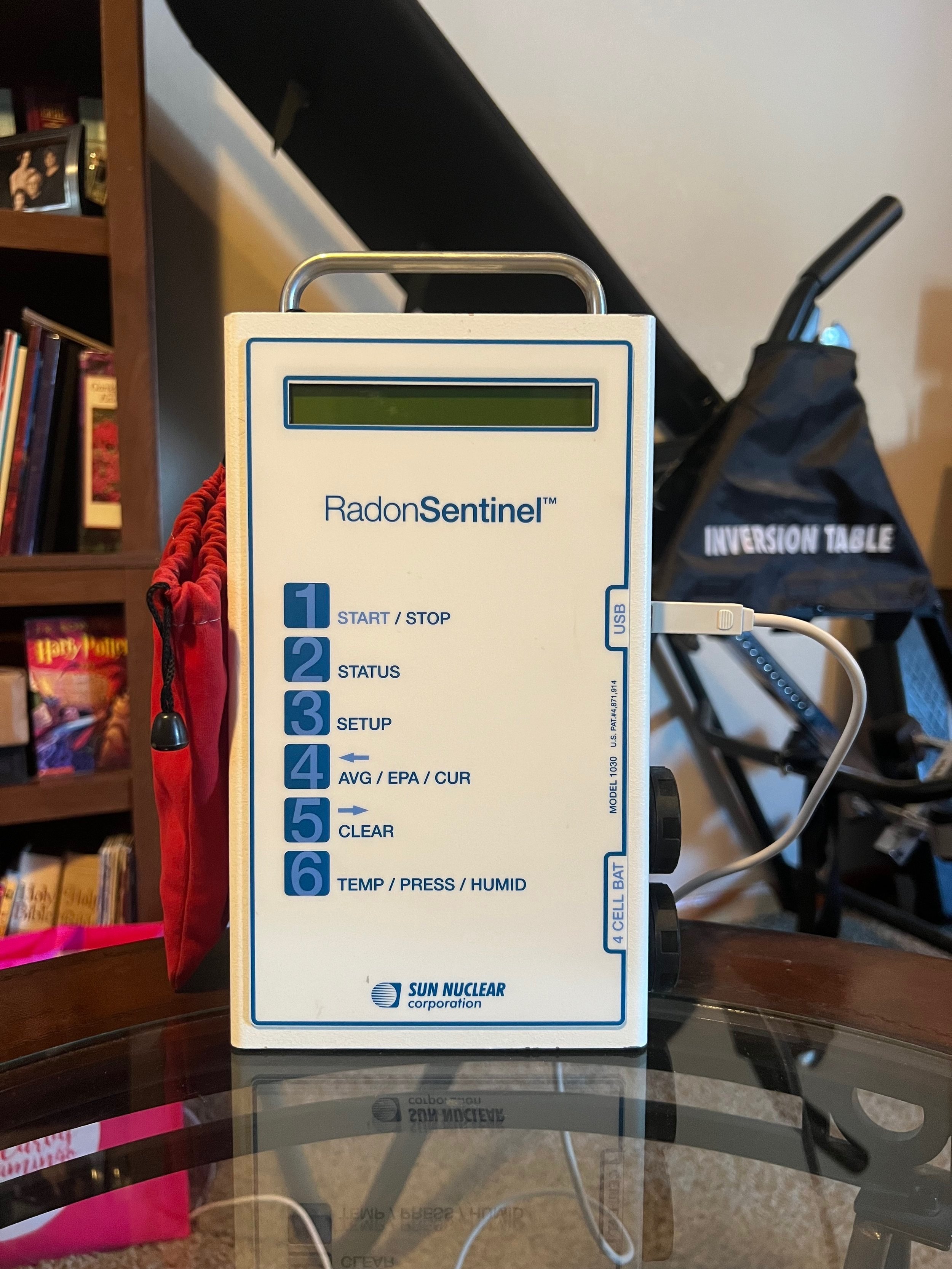The First Step to Safe Air
Testing your home is the only way to know your radon levels and if you’re at risk.
Radon Testing: Why?
North Dakota is one of only two states with all of its counties classified in the EPA’s zone 1 ranking. With an estimate of 480,000 LBS of uranium under our soil, there is a high potential to have elevated radon levels.
Any house that touches dirt is subject to have radon as it is a byproduct of uranium deposits decaying deep under the surface. It rises through the ground and into a house through cracks and holes in the foundation, construction joints, gaps around pipes or cavities within the walls.
Not all homes will have elevated levels of radon; however, with this classification it is important to have your home tested. The EPA recommends taking action at levels of 4.0pCi/L and above. We strive to reach long term levels below 4.0pCi/L post mitigation and have frequently taken levels to below 1.0pCi/L.
For more Information on radon zoning: https://www.epa.gov/radon
Radon Testing: How does it work?
Certified radon testing is typically a 72 hour process. After the test is set, it will be delayed for 24 hours to allow the house to settle into “closed house conditions”. This means all windows and doors are closed, and most appliances that move air into the home are off or in recirculation mode.
The next 48 hours will tell us how much radon is present in the home, and if mitigation is necessary. The EPA recommends mitigation at levels above 4.0 pCi/L.
After a mitigation system is installed, another test is set to determine the systems efficiency. Small tweaks can be made to lower radon levels, ensuring they are below 4.0 pCi/L.


